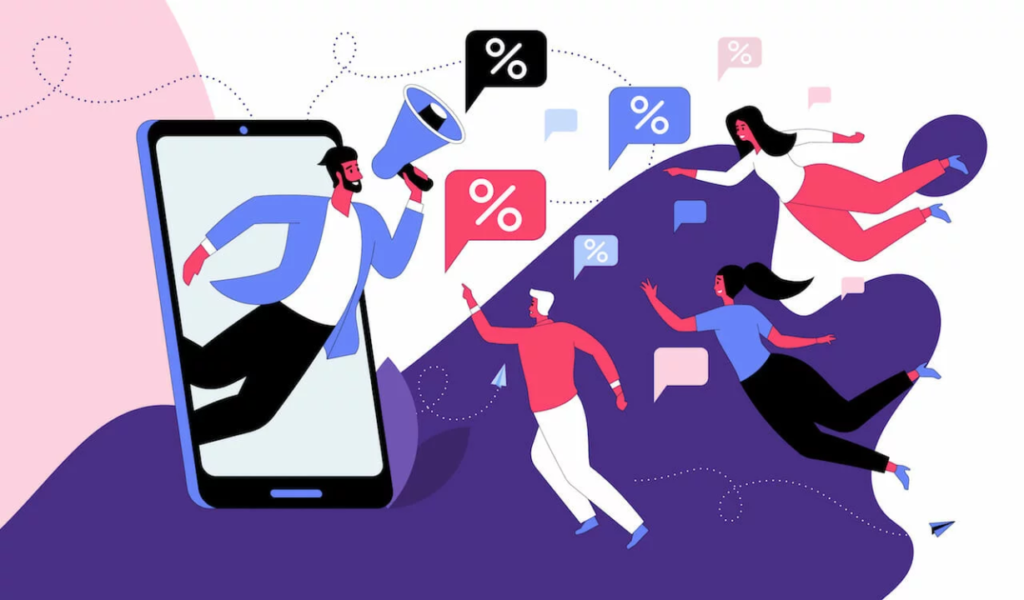In today’s digital age, establishing a robust online presence is crucial for businesses in every industry, including the contracting sector. Social media platforms provide a powerful avenue for contractors to connect with potential clients, showcase their expertise, and ultimately attract new business opportunities. To help contractors make the most out of their social media presence, here are eight essential strategies to magnetize clients.
“Cash Flow Explosion: Start Earning Big Bucks TODAY – Absolutely FREE Training!”

1.Create Compelling Visual Content:One of the most effective ways to capture the attention of potential clients is through visually appealing content. Contractors should invest time in creating high-quality images and videos showcasing their past projects, craftsmanship, and the overall quality of their work. Platforms like Instagram and Pinterest are particularly conducive to sharing visual content, allowing contractors to tell a compelling story about their capabilities.

“Cash Flow Explosion: Start Earning Big Bucks TODAY – Absolutely FREE Training!”

2.Leverage Client Testimonials and Reviews: Word-of-mouth marketing remains a powerful tool for contractors, and social media provides the perfect platform to amplify positive feedback. Encourage satisfied clients to leave reviews on your business page and share their testimonials on social media. This not only builds credibility but also acts as a powerful endorsement for your services, attracting potential clients seeking trustworthy and reliable contractors.
3.Engage with Your Audience: Social media is not just a broadcast channel; it’s a two-way communication tool. Regularly engage with your audience by responding to comments, answering queries, and participating in relevant discussions. This fosters a sense of community around your brand and establishes a connection with potential clients. The more engaged and responsive you are, the more likely people are to choose your services over competitors.


4.Utilize Targeted Advertising: Social media platforms offer robust advertising options that allow contractors to target specific demographics, ensuring their content reaches the right audience. Invest in targeted advertising to showcase your services to individuals and businesses in your local area who are most likely to require your expertise. This approach maximizes the impact of your marketing efforts and increases the likelihood of converting leads into clients.
“Cash Flow Explosion: Start Earning Big Bucks TODAY – Absolutely FREE Training!”
5.Educate and Inform: Position yourself as an industry expert by sharing valuable and educational content related to your field. Create blog posts, infographics, or video tutorials that address common questions or challenges your potential clients might face. By providing useful information, you not only showcase your knowledge and expertise but also establish trust with your audience. This trust can be a deciding factor for clients when choosing a contractor for their projects.


6.Highlight Sustainability Practices: As environmental consciousness grows, clients increasingly seek contractors who prioritize sustainability. Showcase your commitment to eco-friendly practices on social media platforms. Share insights into how your business minimizes waste, uses environmentally friendly materials, or adopts energy-efficient technologies. Demonstrating a commitment to sustainability can attract clients who value environmentally responsible contractors.
“Cash Flow Explosion: Start Earning Big Bucks TODAY – Absolutely FREE Training!”
7.Run Contests and Giveaways: Boost engagement and expand your reach by organizing contests or giveaways on your social media platforms. Encourage followers to participate by sharing your posts, tagging friends, or submitting their own content related to your services. This not only increases your visibility but also generates excitement and positive associations with your brand, making it more likely that individuals will consider your services in the future.


8.Collaborate with Influencers and Partners: Identify influencers or businesses in your local community that align with your brand values. Collaborate with them on social media campaigns or joint projects. Such partnerships can introduce your services to a wider audience and build credibility through association. Influencers’ recommendations or collaborations with reputable businesses can significantly impact the perception of your contracting services.
Create Compelling Visual Content
Creating compelling visual content is all about grabbing and holding someone’s attention with images, videos, or graphics. It’s like using a superpower to communicate your ideas in a way that’s clear, memorable, and maybe even a little bit emotional.
Here are some of the key ingredients:
“Cash Flow Explosion: Start Earning Big Bucks TODAY – Absolutely FREE Training!”
- Know your audience: Who are you trying to reach? What are their interests and needs? Once you know that, you can tailor your visuals to resonate with them. For example, if you’re targeting teens, you might use humor or trendy visuals.
- Tell a story: Don’t just throw a bunch of random images together. Use your visuals to guide the viewer through a narrative, even if it’s a simple one. This will make your content more engaging and memorable.
- Keep it simple: Avoid using too much clutter or complex visuals. People’s attention spans are short, so you need to make your point quickly and easily.
- Use high-quality visuals: Blurry or pixelated images will just turn people off. Make sure your visuals are clear and sharp.
- Be creative: There are no hard and fast rules for creating compelling visuals. Experiment with different styles and techniques to find what works best for you.
Here are some examples of different types of compelling visual content:
- Infographics: These are a great way to present complex information in a visually appealing way.
- Photos: A well-chosen photo can evoke a wide range of emotions and tell a story in a single frame.
- Videos: Videos can be a powerful tool for storytelling, education, and entertainment.
- Graphics: Simple graphics can be used to illustrate concepts or add visual interest to text-based content.
Remember, the most important thing is to be creative and have fun! Experiment with different ideas and see what you can come up with.
Leverage Client Testimonials and Reviews
Leveraging client testimonials and reviews” means using positive feedback from your customers to build trust and credibility with potential customers. It’s like letting your happy clients speak for you and show others why they love your business.
“Cash Flow Explosion: Start Earning Big Bucks TODAY – Absolutely FREE Training!”
Here are some ways businesses can leverage client testimonials and reviews:
- Display them on your website: This is a classic way to show potential customers what others think of your product or service. You can use quotes, star ratings, or even video testimonials.
- Share them on social media: Social media is a great platform to spread the word about positive feedback. You can post quotes, testimonials, or even case studies that highlight how your business has helped clients.
- Use them in marketing materials: Include testimonials and reviews in your brochures, presentations, and other marketing materials. This can help you stand out from the competition and make a positive impression on potential customers.
- Respond to negative reviews: Don’t shy away from negative feedback. Instead, use it as an opportunity to show potential customers that you care about their concerns and are committed to providing excellent service. Respond to negative reviews politely and professionally, and outline what you’re doing to address the issue.
Overall, leveraging client testimonials and reviews is a powerful way to build trust and credibility with potential customers. By showcasing positive feedback, you can make a strong case for why people should choose your business.
Remember, even though reviews and testimonials are important, it’s also crucial to ensure all your marketing practices are age-appropriate and ethical. Focus on the value you provide and avoid any misleading or manipulative tactics.
Engage with Your Audience
Engaging with your audience” means building a connection with them and making them actively participate in what you’re doing. It’s about going beyond just talking at them and instead, creating a two-way interaction that’s enjoyable and meaningful for everyone involved.
“Cash Flow Explosion: Start Earning Big Bucks TODAY – Absolutely FREE Training!”
Here are some key elements of engaging with your audience:
- Understanding your audience: Who are you trying to reach? What are their interests, needs, and expectations? Knowing your audience helps you tailor your content and approach to better resonate with them.
- Being interactive: Encourage participation through questions, polls, discussions, or activities. This makes your audience feel involved and invested in what’s happening.
- Using storytelling: People love stories! Weave narratives into your content to make it more relatable and memorable. Share personal anecdotes, case studies, or even create fictional scenarios that illustrate your points.
- Being authentic: Speak from the heart and show your personality. People connect with genuine individuals, so don’t be afraid to let your own voice shine through.
- Responding to feedback: Pay attention to what your audience is saying and reacting to. Address their questions, concerns, and suggestions to show that you value their input.
Engaging with your audience isn’t just about getting them to do what you want; it’s about building a community and fostering a sense of connection. By focusing on mutual interaction, understanding, and creativity, you can create experiences that are enjoyable and valuable for everyone.
Remember, the specific ways you engage with your audience will vary depending on the context, whether it’s a presentation, a social media post, a creative project, or something else. But by keeping these core principles in mind, you can build strong connections and make your interactions more meaningful.
Utilize Targeted Advertising
Utilize targeted advertising means using data about people to show them ads that are more likely to interest them. It’s like using clues about someone’s preferences to send them personalized recommendations.
“Cash Flow Explosion: Start Earning Big Bucks TODAY – Absolutely FREE Training!”
Here’s how it works in a nutshell:
- Data collection: Information about people’s online activity is gathered from various sources, like websites they visit, things they search for, or what they buy.
- Audience segmentation: This data is used to group people with similar interests or characteristics. Think of it like sorting books into different genres.
- Ad delivery: Ads are then shown to specific groups of people based on their assigned categories. So, someone interested in video games might see ads for new releases, while someone who loves baking might see ads for kitchen gadgets.
Targeted advertising can be both beneficial and controversial.
Benefits:
- More relevant ads: People are more likely to see ads they find interesting or useful, which can improve the ad experience for everyone.
- More effective marketing: Businesses can reach the right audience with their message, potentially leading to better results for their campaigns.
- Personalization: Some people appreciate seeing ads tailored to their specific needs or preferences.
Concerns:
- Privacy: Collecting and using personal data raises concerns about privacy and how it’s used.
- Bias: Targeted advertising algorithms can sometimes perpetuate stereotypes or biases based on the data they’re trained on.
- Manipulation: There’s a risk that ads could be used to manipulate people’s behavior or exploit their vulnerabilities.
It’s important to be aware of how targeted advertising works and the potential issues it raises. You can make informed choices about your online privacy and how you interact with ads.
Here are some tips:
- Review your privacy settings: Many websites and platforms allow you to control how your data is collected and used.
- Be mindful of your online activity: What you search for, like, and share online can be used for targeting.
- Use trusted sources: Be cautious about clicking on ads or links from unknown sources.
- Report inappropriate ads: If you see an ad that is discriminatory, manipulative, or otherwise harmful, you can report it to the platform where you saw it.
Remember, you have control over your online experience. By understanding how targeted advertising works and making informed choices, you can ensure that it’s not something that negatively impacts you.
Educate and Inform
Educate and inform are both about sharing knowledge, but they do it in different ways:
Educate is about developing someone’s understanding of a topic or skill. It’s like building a foundation of knowledge and helping someone learn how to think critically about it. Education often involves:
“Cash Flow Explosion: Start Earning Big Bucks TODAY – Absolutely FREE Training!”
- Structured learning: This could be through formal schooling, online courses, or even self-directed learning with textbooks and other resources.
- Guiding and supporting: Teachers, instructors, or mentors can help learners understand the material, answer questions, and provide feedback.
- Practice and application: Learning isn’t just about memorizing facts; it’s about being able to use the knowledge in different situations.
Inform is about providing someone with knowledge on a specific topic. It’s like giving someone a piece of information, without necessarily going into the deeper details or helping them understand it fully. Informing often involves:
- Sharing facts and details: This could be through news articles, documentaries, social media posts, or even casual conversations.
- Raising awareness: Informing can be used to make people aware of new things, important issues, or different perspectives.
- Engaging attention: Informative content should be interesting and engaging enough to capture people’s attention and hold it.
Here’s an analogy: Imagine you’re learning to play a musical instrument. Education would be like taking lessons from a teacher, who would guide you through the basics, help you practice, and give you feedback. Informing would be like reading a music theory book, which would give you the facts and details about music but wouldn’t necessarily help you learn to play an instrument yourself.
Both educating and informing are important ways to share knowledge and help people learn. Which one is more appropriate depends on the situation and the goals you’re trying to achieve.
Highlight Sustainability Practices
Highlight Sustainability Practices” sounds like a call to action! It encourages people to bring attention to actions and choices that have a positive impact on the environment and society.
Here are some ways to interpret it:
“Cash Flow Explosion: Start Earning Big Bucks TODAY – Absolutely FREE Training!”
Sharing sustainable habits: It could be about showcasing everyday practices that reduce our environmental footprint, like using reusable bags, biking to work, or composting.
Promoting sustainable businesses: It might highlight companies that prioritize sustainability in their operations, products, or services.
Raising awareness about sustainability issues: It could be used to draw attention to environmental challenges and advocate for solutions.
Celebrating sustainability achievements: It could be a way to recognize and encourage individuals, communities, or organizations that are making a difference.
Ultimately, “Highlight Sustainability Practices” is about spreading awareness and inspiring action towards a more sustainable future.
Run Contests and Giveaways
Running contests and giveaways can be a fun and engaging way to:
- Boost your brand or channel: Contests and giveaways can attract new followers, increase brand awareness, and generate excitement around your product or service.
- Grow your audience: By requiring people to follow, like, or share your content to enter, you can organically expand your reach.
- Collect valuable data: You can learn more about your target audience by seeing what types of prizes they’re interested in and how they interact with your contest.
- Generate user-generated content: Encourage participants to share photos, videos, or stories related to your brand or product, which you can then use for marketing purposes.
Here are the basic steps to run a successful contest or giveaway:
- Set your goals: What do you hope to achieve with your contest? Once you know your goals, you can choose the right type of contest and prize.
- Choose your platform: Where will you host your contest? You can run contests on social media, your website, or through a third-party platform.
- Pick a prize: The prize should be something that your target audience will be excited about. It doesn’t have to be expensive, but it should be relevant to your brand or product.
- Create clear rules: Make sure your contest rules are easy to understand and follow. Be specific about the eligibility requirements, how to enter, and how the winner will be selected.
- Promote your contest: Spread the word about your contest through social media, email marketing, your website, and other channels.
- Select a winner: Choose a winner randomly or based on a predetermined criteria. Be sure to announce the winner publicly and contact them directly.
- After the contest is over, take some time to follow up with your participants. Thank them for entering, and let them know about any future promotions or contests.
Here are some tips for running a successful contest or giveaway:
“Cash Flow Explosion: Start Earning Big Bucks TODAY – Absolutely FREE Training!”
- Keep it simple: Don’t make your contest too complicated to enter. People are more likely to participate if it’s easy to do.
- Be creative: Come up with a unique and engaging contest idea that will stand out from the crowd.
- Promote early and often: Make sure to get the word out about your contest well in advance.
- Use visuals: Eye-catching graphics and photos can help to attract attention to your contest.
- Make it fun: Contests should be enjoyable for everyone involved.
Collaborate with Influencers and Partners
“Collaborate with Influencers and Partners” refers to working together with people who have a large following or expertise in a specific area to achieve a shared goal. Here’s a breakdown of the terms:
Influencers: These are individuals who have built a reputation for knowledge or credibility in a particular field. They often have significant followings on social media or other online platforms and can influence the opinions and buying decisions of their audience.
Partners: These are individuals or organizations that you team up with to share resources, expertise, and effort to achieve a common objective. Partners can be complementary businesses, non-profit organizations, or even individuals with relevant skills or experience.
Collaborate: This means working together in a coordinated and mutually beneficial way. It’s about combining your strengths and resources to achieve something you couldn’t do alone.
So, “Collaborate with Influencers and Partners” could involve several different things, depending on your specific goals and the interests of your potential collaborators. Here are some examples:
- An influencer might promote your product or service to their audience in exchange for a fee or commission.
- You might partner with a non-profit organization to create a joint marketing campaign to raise awareness about a social issue.
- You might collaborate with another business to develop a new product or service that combines your expertise.
The possibilities are endless! The key is to find partners and influencers who share your values and whose skills and reach complement your own. By working together, you can achieve greater impact and reach a wider audience than you could ever do on your own.
“Cash Flow Explosion: Start Earning Big Bucks TODAY – Absolutely FREE Training!”
Conclusion:
In the competitive world of contracting, an effective social media strategy is indispensable for attracting clients and growing your business. By implementing these eight essential strategies, contractors can create a compelling online presence, engage with their target audience, and ultimately magnetize clients who are seeking reliable and skilled professionals for their projects. Embracing the power of social media can transform your contracting business into a magnet for success.
“Cash Flow Explosion: Start Earning Big Bucks TODAY – Absolutely FREE Training!”
I appreciate you reading my full article,Building Your Business: 8 Essential Social Media Strategies for Contractors to Magnetize Clients



